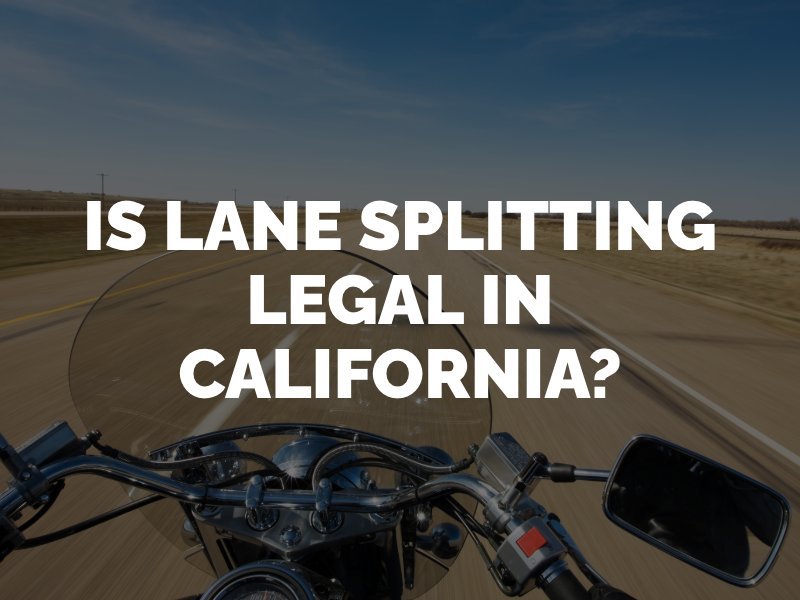Is Lane Splitting Legal in California?
If you ride a motorcycle in the State of California, you can lawfully ride on the dotted line between two lanes of traffic on a highway with two or more lanes moving in the same direction. This is lane splitting, and it is legal in California. In August 2016, California became the first state in America to pass a law that officially defined lane splitting (also called lane sharing) in its vehicle code. It was also the first state to remove the language in its law that made lane splitting illegal.

Why Did California Legalize Lane Splitting?
California decided to remove the language from its traffic laws prohibiting a motorcyclist from riding on the line between lanes due mainly to a study from UC Berkeley. Although technically California did not legalize lane splitting, it removed the law barring this practice, becoming neutral on the subject. The change officially made lane splitting neither legal nor illegal in California. The Berkeley study looked at nearly 1,000 lane-splitting accidents and concluded that lane splitting is reasonably safe when done at no more than 15 miles per hour over the speeds of surrounding vehicles. California passed the law permitting motorcyclists to lane split the year after the study was published.
Is Lane Splitting Safe?
The debate over the safety of lane splitting is what has prevented other states, so far, from following California’s lead. Although the UC Berkeley study is the most comprehensive lane-splitting study available, and it concluded that lane splitting is relatively safe when done prudently, lawmakers in other states have consistently voted down laws allowing this practice. Voices against motorcycle lane splitting say it can increase the risk of sideswipe, merge and lane-change collisions. Those for lane splitting say it can reduce traffic congestion and prevent deadly rear-end motorcycle accidents.
If you decide to split lanes as a motorcyclist in California, do so as safely as possible. Although the California Department of Motor Vehicles (DMV) took down its initial lane-splitting guidelines due to a lack of official rules from authorities, the guidelines can still help a motorcyclist lane split safely. The guidelines stated to travel no faster than 10 miles per hour over the speed limits of surrounding traffic. The speed differential between the motorcyclist and surrounding traffic was the main precursor of serious accidents in the Berkeley study. The DMV also advised not to lane split when surrounding traffic is traveling 30 miles per hour or faster. These are good general lane-splitting guidelines for the safest possible ride.
Can Lane Splitting Affect a Motorcycle Accident Claim?
Yes, lane splitting as a motorcyclist could affect how the courts handle a related accident claim in California. California is a pure comparative negligence state. During a motorcycle accident claim, the defendant (at-fault party) will have the right to allege the plaintiff’s (injured party’s) comparative fault for injuries. If the courts find there is enough evidence to assign a percentage of fault for the wreck with the plaintiff, the plaintiff will receive a reduced recovery award. The courts will diminish the value of the claim by the plaintiff’s percentage of fault.
If you get into a motorcycle accident while safely and prudently lane splitting, you may not bear any degree of fault for your collision. If, however, the defendant can prove you were speeding, weaving between cars or otherwise riding recklessly, he or she may be able to convince the courts that you were partially at fault for the crash. In this case, you would receive less compensation than you otherwise would have. Fifteen percent of the fault for a lane-splitting accident, for example, would reduce your compensatory award by the same percentage. It is important to work with a Los Angeles motorcycle accident lawyer if you get into a lane-splitting accident. A lawyer can help you maximize your results whether or not you were lane splitting in California.
